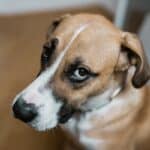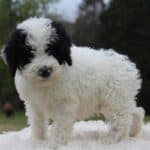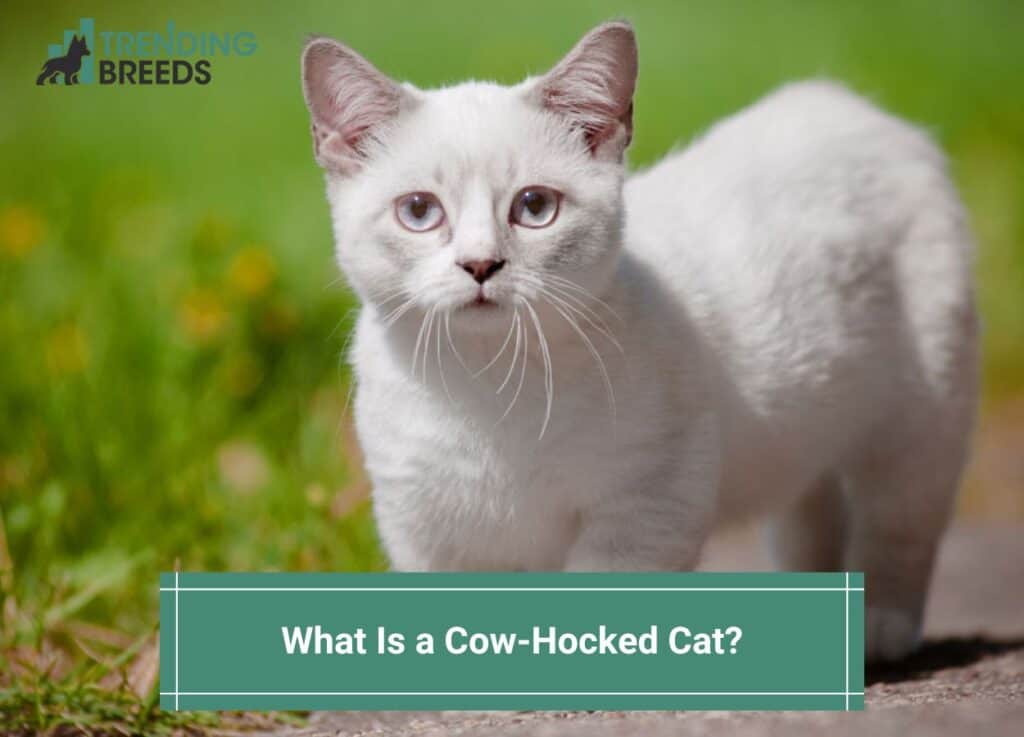
We all love our cats exactly as they are; quirky or elegant. However, some cats are born with deformities. One of these deformities is called “cow hocks.” You may be wondering, “What exactly is a cow-hocked cat?”
Cats with cow hocks have a physical defect in which their hind legs bow inward toward each other.
The name “cow-hocked” comes from a body shape similar to a cow’s. Cow-hocked legs can be painful for your cat and do more than alter its appearance.
Keep reading below to find out more about this abnormality.
Before you scroll further down this guide, check out these other cat-related articles: Can Cats Eat Ketchup? and Interesting Blond Cat Breeds.
Table of Contents
What is a Cow-Hocked Cat?
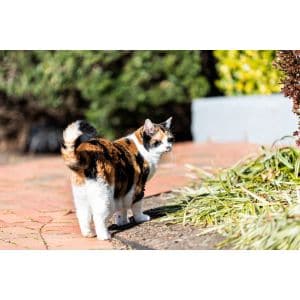
Cow hocks, also known as “x-legs,” are abnormal variations in the shape of a cat’s hind legs.
The condition known as “cow hocks” is caused by an alignment issue in the hind legs that causes the knees and toes to turn outward.
Cats with cow hocks are easy to spot when walking; the condition can range from a mild misalignment to legs that form an X.
However, seeing when cats typically stand is more challenging, and cat owners fail to notice this deformity.
There is currently no treatment for this inherited deformity, which can cause serious health problems based on its severity.
It can cause long-term problems like arthritis and spinal issues for cats because of the added weight and stress on their hips and spine. This condition cannot be cured and often causes excruciating cat suffering.
Most treatments focus on pain management and stress reduction rather than a cure per se to provide the cat with the highest possible quality of life despite the illness.
Cow-hocked kittens have the potential to be born in any cattery; they can even be born to cow-hocked cats that live in the wild.
However, wild cow-hocked cats will be the most susceptible to the condition and may not survive because they won’t be able to move quickly enough.
To maintain a healthy breeding line, congenitally deformed cats are neutered or spayed by responsible breeders.
Cat Cow-Hock Symptoms
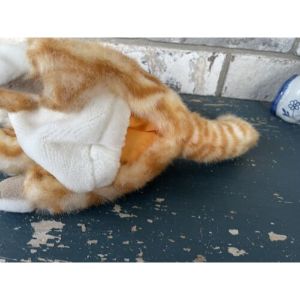
Spotting a cow-hocked cat isn’t as uncommon as you may thing; mild cases are usually not a big deal. Most kittens appear to have cow hocks until adulthood when their limbs become linear.
The most noticeable symptom of a cow-hocked cat is an inward angle of the hind legs and increased foot splaying.
However, the severity of the symptoms increases when cow-hock is combined with sickle-hock (rounded ankles instead of straight).
As a cat ages, many cow-hock symptoms tend to become more prominent. If you have an older cat, watch for these changes.
Cats that cow-hock often can develop problems like:
- Clumsy gait
- Arthritis with early onset
- Damage to the spinal cord
- Being unable to protect oneself from predators
- Inability to run or walk fast
Are Cow-Hocks Dangerous for Cats?
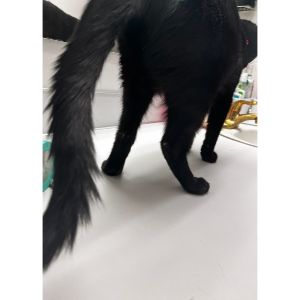
Cow hocks are more than just an aesthetic defect in cats. It’s a congenital disorder where the back legs don’t align properly. Cow-hock is usually just an amusing cosmetic defect in your cat.
However, the severity of cow-hocking varies widely, from a barely noticeable defect to a severe spinal disability.
Arthritis
Cow-hocking is less of an issue in younger or more mature cats. But ‘x-legs’ can be a serious problem for an older cow-hocked cat or a cat with excess weight.
Arthritis is one of the most serious consequences of this deformity.
Cow-hocked cats are predisposed to developing arthritis, typically associated with aging pets. This disease has the potential to be extremely debilitating.
Arthritic cow-hocked cats frequently experience painful joint swelling and stiffness. They have trouble getting up on their hind legs and jumping or walking. A minor limp in your cat could become a permanent inability to walk.
Your cat could become irritable and aggressive, spend less time grooming, less time active, and more time sleeping or hiding. Its legs could become stiff.
Injuries to your cat’s joints and bones are likely once they develop arthritis. Fractures and other injuries are more common in arthritic cats than healthy ones.
Spinal Cord Damage
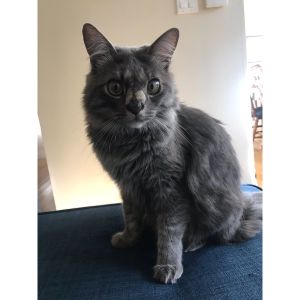
As was previously mentioned, “cow-hocked” cats have hocks that are so close together that they touch. Long-term exposure to such conditions can cause spinal degeneration in your cat.
Muscle spasms and a lack of coordination are possible side effects for your cat. Spinal damage can cause lameness, which may initially manifest as tense muscles or an abnormal posture.
Spinal injuries can manifest in various ways, including weakness, incoordination, numbness, loss of bladder or bowel control, intense back pain, and strain on the neck.
Can Cow-Hock Cats Be Treated?
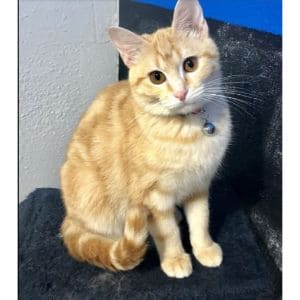
Cow hocks in cats are incurable at present. A genetic abnormality causes cow hocks and cannot be treated with prescription medications.
Veterinarians can prescribe medication to ease the pain of arthritis in older cow-hocked cats.
A cow-hocked cat is predisposed to developing arthritis, which can cause excruciating pain. However, medications available can lessen your pet’s suffering and improve the quality of life.
In addition, veterinarians frequently advise owners of cow-hocked cats to keep their felines indoors, where they are safer from potential harm.
A cow-hocked cat will also require special attention to their diet and weight. Cow-hocked cats must be careful not to overwork their backs, legs, or spines.
If your cat has cow hocks, you must keep a close eye on their diet to ensure they stay at the ideal weight.
Supplementing your cat’s diet with the right nutrients can do wonders for your pet’s arthritic joints.
Cow-hocked cat owners should consult their veterinarians about getting their feline companions special nutritional supplements.
The cow-hock condition will not be fixed by the supplements. However, they will improve your pet’s joint health and keep the deformity from causing unnecessary pain or discomfort.
Exercising your cat in one of the many ways possible is a surefire way to lessen their discomfort and strengthen their joint bones.
Stomach Rub
To pet your cat’s belly, you must get it to lie down on its back. You can help your cat build strong abdominal muscles by rubbing his belly and encouraging him to roll from side to side.
Kneading
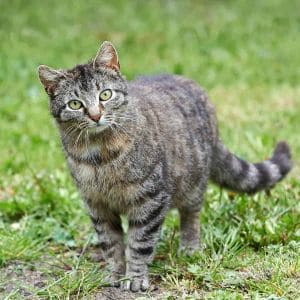
Kneading is when you roll the cat and pinch it gently. Circulation and blood flow are improved across your cat’s body with this type of exercise.
Additionally, kneading your cat’s back and neck can help relieve some of the strain put on the animal from being cow-hocked.
Butt Rub Dance
Strenuously pet your cat on the top of its rear end. Some felines find this activity stimulating, and by shifting their body weight from side to side, they get some much-needed relief for their aching backs, legs, and paws.
Cushion Stretching
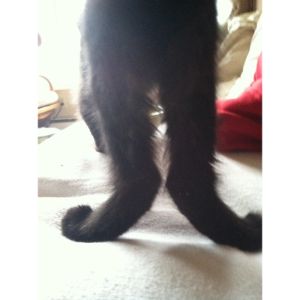
While seated, prop up your cat’s front paws with a cushion or your hands and have it rest its hind paws on the sofa. If at all possible, you should aim to have your cat maintain this position for two full minutes.
This should be done twice daily, at minimum. Strength, flexibility, and the ability to fully extend the hip are all improved by this exercise for the back legs.
Wheelbarrow
Cats’ weak forelegs can be strengthened by being lifted from the abdomen and raising their hind legs. Avoid using your pet’s hind legs to lift its body, and don’t forget to prop up its midsection.
The abdominal muscles can lift the front paws, forcing the animal to walk on its hind legs and strengthening the hamstring muscles and glutes.
You should also begin by standing still; once your pet is relaxed, you can try to coax them into moving forward or backward.
Scrunchie On the Paw
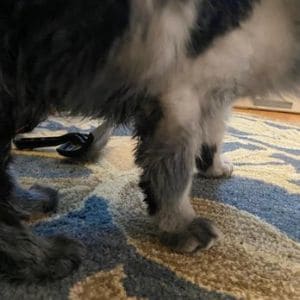
To protect your pet’s paws, try using a bootie or scrunchie. When you put the bootie on your cat, it will likely try to shake its paw out of it.
Shaking a cat’s paw can help them become more comfortable bearing its weight. You can perform this exercise with each of their paws multiple times.
Rock On
Your cat will benefit from learning to walk on various surfaces, including those that aren’t completely flat. If your cat is unbalanced, it will automatically adjust its weight distribution.
Regular exercise will improve your cat’s leg strength, coordination, range of motion, and proprioception.
Begging
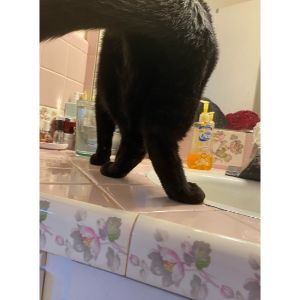
Use a tasty and nutritious treat as bait to get your cat to stand on its hind legs. The cat’s head can be coaxed as high as it will go and held there for some time.
However, if your cat is truly enthusiastic about the reward, it will rise to its hind legs. Try shifting the treat laterally and watching your cat’s reaction to increase the difficulty.
Your cat’s coordination and joint health will benefit from this exercise, which focuses on building core strength.
While your cat is standing, raise his or her left front paw and right hind leg simultaneously to perform a set of contralateral limb lifts. Keep this position for a few seconds before switching sides.
Even though these exercises won’t fix your pet’s x-legs, they will help keep their joints and bones healthy.
Additionally, several of these exercises target your cat’s skeletal and muscular systems; with a consistent effort from both of you, your cat will benefit from relieving pain, stress, and tension in their small body.
Causes of Cow-Hocks in Cats
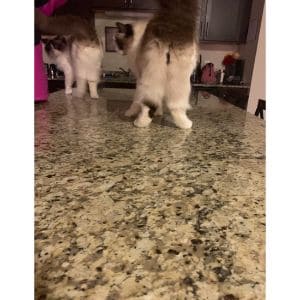
As you know, genetics play a huge role for a cow-hocked cat. Kittens inherit this abnormality from both their parents. There is no treatment or vaccine available to prevent this deformity.
When dealing with an adult cat, it may be easy to determine whether it has cow hocks. However, when dealing with kittens, there is no way to know whether your kitty will have cow hocks.
Even if the kitten’s mother and father are cow-hocked, there is no guarantee that the kitten will also be cow-hocked.
Kittens are adorable, but their hind legs are usually very small and floppy. You’ll have to wait until your cat is an adult to make sure it doesn’t have cow hocks.
Which Breeds are Susceptible to Cow-Hocks?
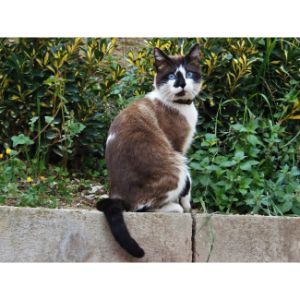
There is not enough data to determine whether cow hock affects certain breeds of cats more than others or affects all cat breeds. More research and scientific investigation are required.
However, the spread of cow-hocking genes can be stopped in its tracks. Cat owners and breeders should limit the number of cow-hocked cats in existence.
Cow-hock cats, as you may know, pass on their unique genetic makeup to their offspring. However, not all kittens born to a cow-hocked cat will inherit the trait.
Frequently Asked Questions
What is cat splooting?
Splooting refers to when a cat lies down with its legs stretched outside of it. The cat is simply relaxing.
How do cats give kisses?
Cat ‘kisses’ happen when a cat makes eye contact with someone it likes and gives a slow blink, almost to a squint.
Can you leave cats alone for 3 days?
It is not recommended to leave your cat alone for more than a day.
So What Is a Cow-Hocked Cat?
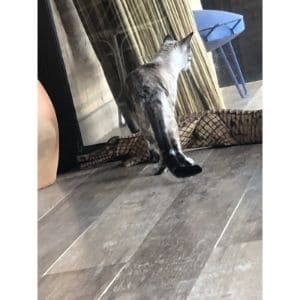
If you suspect you have a cow-hocked cat, don’t worry; it’s usually nothing more than an aesthetic flaw.
All your pet needs from you are lots of love and attention, a healthy diet, and regular exercise, and they should live a long and happy life with you.
However, if your cat has cow hocks and other health problems, you must be attentive to its needs and wants.
If you find this guide, “What Is a Cow-Hocked Cat,” informative and helpful, you can check out these other animal-related articles from our team:
You can learn more about this topic s by watching “Splayed Leg Kittens, Why You Need Mats – Cat Breeding For Beginners, Cattery Advice for Breeders” down below:


